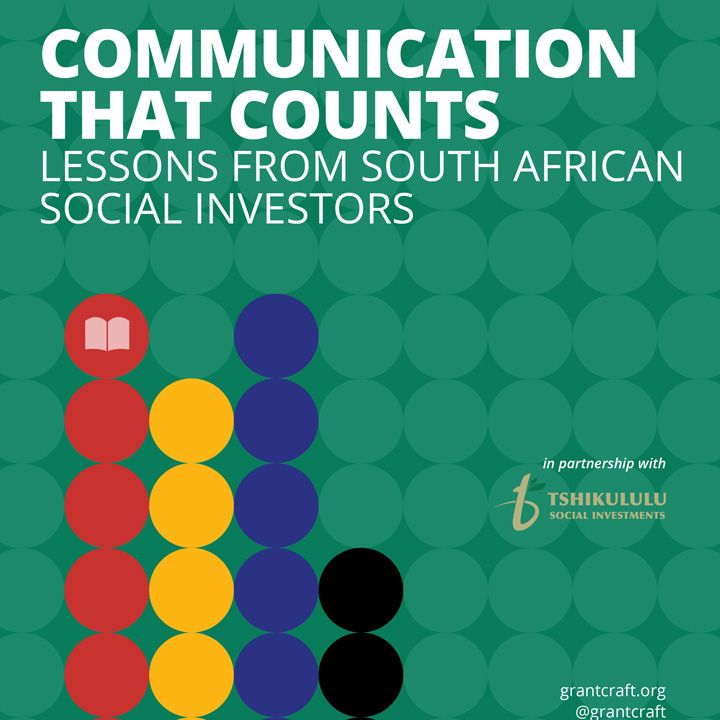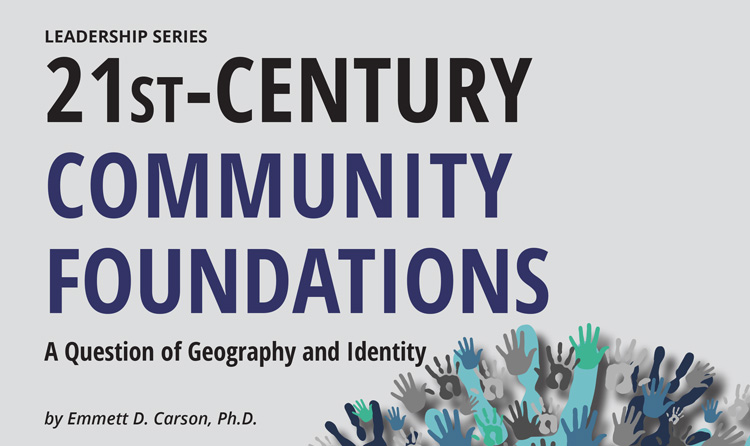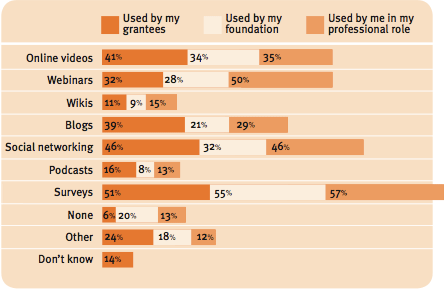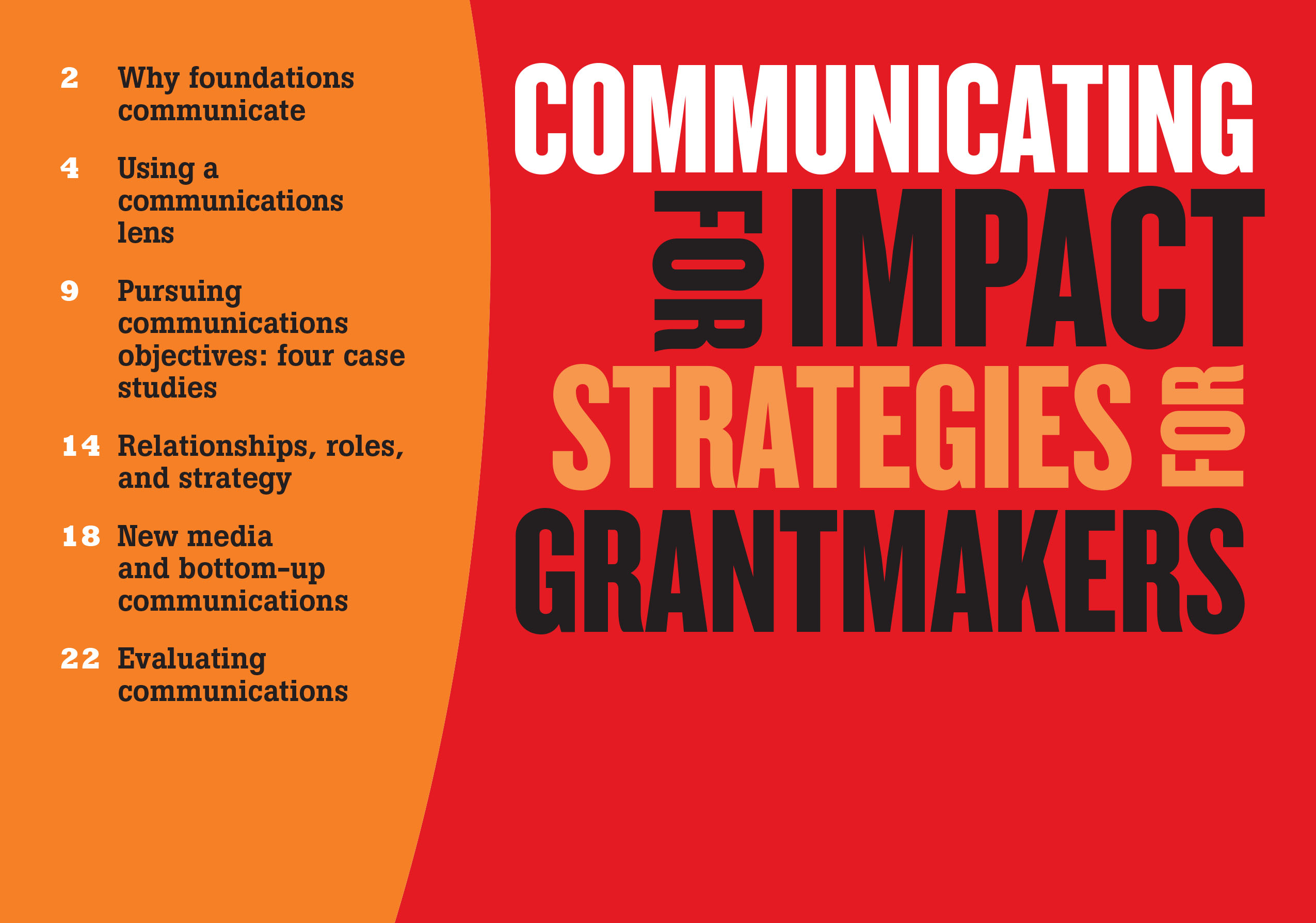Communication That Counts Discussion Guide for Thoughtful Funder Reflection
These questions pertain to GrantCraft's guide, Communication That Counts: Lessons From South African Social Investors. Answer these questions by yourself or talk through them with your colleagues or partners to find out how you are doing with your collaboration and partnership communication:
Collaboration and Enhancing Partnerships
When a social investor is collaborating with others on social investment work, communication about roles and relationships needs to be treated with special sensitivity, and it’s important for partners to focus on communicating a consistent message.
- Is every collaborator/partner feeling heard, involved, and understood? Rather than assuming this is the case, what can we do to find out?
- Do we have platforms in place to ensure regular communication takes place between all parties, such as meetings or report-back sessions?
- Are we open to new ideas on how to partner with others working in the same space?
Grantee Communications
Communicating with grantees is central to the success of any donor-funded programme. This communication begins with creating awareness around the availability of funding and providing information about the application process, and also includes keeping in touch during the grant period and communicating about the specific work that grantees are doing.
- Have we been including our beneficiaries/ grantees in our communications? If not, how can we do so?
- Have we clearly defined what our expectations are of our beneficiaries when it comes to communications (e.g., are we expecting feedback or wanting them to report on anything)?
- Are we giving grantees the opportunity and platform to express themselves, and are we listening to what they have to say?
Public Relations and Brand Equity
A unique feature of the social investment landscape in South Africa is the large role of public relations or brand awareness. South African companies are legally obligated to spend a portion of their profits on corporate social investment. In seeking to maximise the return on this investment, companies often communicate with the public and potential clients or customers about the social upliftment work that they do as part of their marketing efforts. The benefit of this is that public relations communications can in some ways also help create awareness about the organisations and activities that donors support.
- Do we understand our brand—what it stands for, how it’s perceived by all stakeholders, and how we should communicate these attributes?
- Are we doing effective public relations, or is there room for improvement?
- Which media could we make use of to reach our target audience most effectively, and how can we build relationships with these media?
Investor Relations
While only relevant within the corporate social investment (CSI) space, effective investor relations is a key communication goal for many South African businesses. CSI is one of South Africa's largest social investment avenues, making investor relations an important topic.
- How can we accurately sum up what our programmes aim to achieve, what we are doing, and our key milestones?
- How can we make this information stand out in the integrated report (e.g., can we use visual elements or a brief beneficiary testimonial alongside monitoring and evaluation data)?
Knowledge Sharing
Effective communication among donor peers helps to share lessons learned, increase collaboration, and decrease duplication of efforts. Knowledge sharing can take the form of face-to-face dialogue, newsletters, events and conferences, online resource libraries, social media, and more.
- Who is our audience and what sort of information are they looking for?
- Where is our audience active and what communication platforms do they use (e.g. are they active Twitter users, or do they prefer to interact with us at events or conferences)?
- Are our knowledge-sharing activities providing value to our audience (i.e., answering the questions they’re asking, providing practical advice, etc.) or simply pushing our own agenda?
Internal Communications
Internal communication with staff is a priority for any social investor. Regardless of the type of donor, grantmaking is strengthened when employees buy in to the process and are invested in its success. This is only possible when they have access to information about grantmaking and are able to engage in it.
- Are all employees aware of our social investment initiatives and what we’re trying to do?
- Do we know how they feel about what we’re doing? Have we asked for their thoughts and suggestions, and provided opportunities for them to get involved?
- How can we communicate more effectively with our staff?
- Do we need to set up an internal communications platform (e.g., a blog, internal newsletter, bulletin board, monthly presentation, etc.) or change anything we’ve been doing until now?
Monitoring and Evaluation
Social investors are under increasing pressure to have strong monitoring and evaluation (M&E) systems so that grantmakers and grantees can determine the effectiveness of their projects, and interested stakeholders can compare the work being done by different organisations in the same arena. M&E is also critical in holding beneficiary organisations accountable and providing a map for adjusting programme strategies as required. The way M&E is presented in communications is important if the data is to be understood correctly.
- What key M&E data should we be communicating to our stakeholders?
- Are we making the most of the information we collect for M&E, or is there a way to communicate key points more effectively?
- How can we extract and communicate our M&E findings in a way that helps us achieve our strategic goals?
- How are we measuring the reach and effectiveness of our communications? Can we target more relevant audiences?






